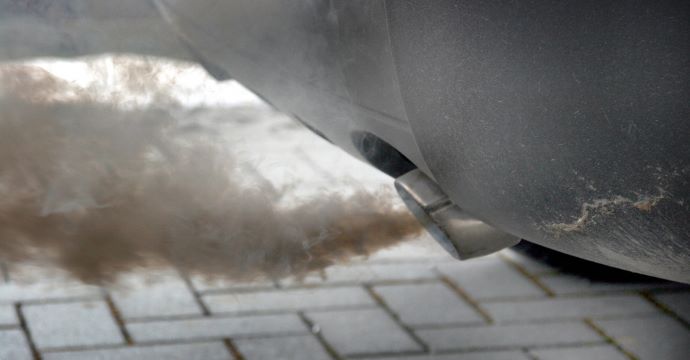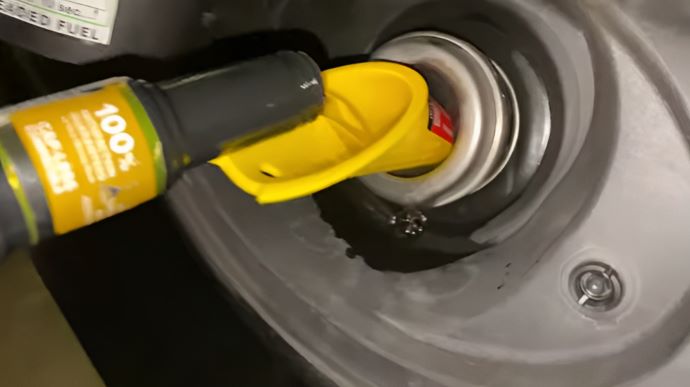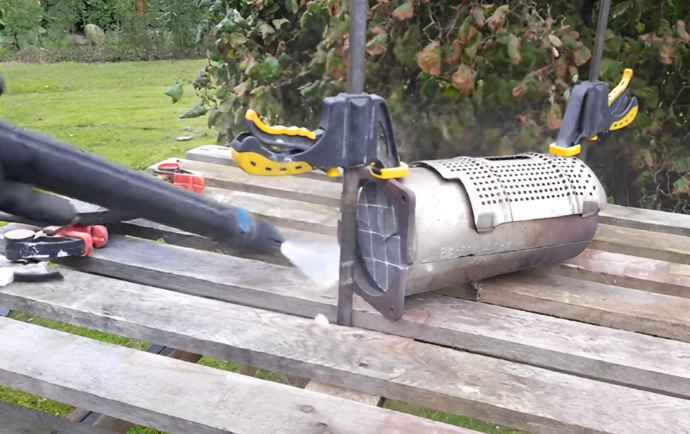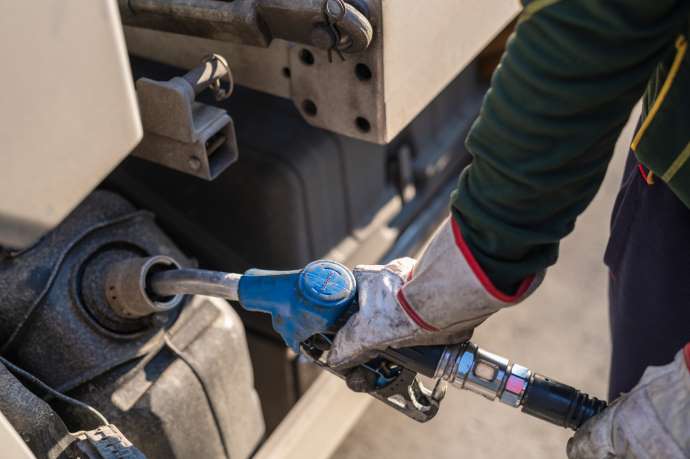DPFs are now a major concern for the Environmental Protection Agency (EPA) in meeting emission standards.
DPF filters capture soot particles and restrict their release through the exhaust to prevent diesel soot particles from entering the environment.
A regeneration process burns diesel soot into gas and keeps the DPF filter clean.
But with time and due to short trips, soot builds up and blocks the DPF filter.
A blocked DPF filter has 04 symptoms:
- Poor fuel economy
- Excessive black fumes from the exhaust
- Less throttle response
- Pungent smell.
To eliminate the problem, you must clean the DPF filter.
In this article, I have explained how to clean your DPF filter by yourself.
Read more:
How to Clean a DPF Filter Yourself [03 Methods]
To clean the DPF filter yourself, you can use 03 common methods.
These methods include active regeneration, adding additives, and using compressed air to clean the filter.
Let us discuss these 03 methods.
01. Cleaning the DPF Filter with the Active Regeneration

The burning of exhaust soot is typically referred to as an active regeneration process.
There are two parts to regeneration, passive regeneration and active regeneration.
The exhaust usually fills up with soot if your vehicle doesn’t activate passive regeneration.
Short, frequent trips lead to passive regeneration failure.
To activate passive regeneration, drive on the highway for half an hour at a constant speed.
The active regeneration process should be used if passive regeneration does not work.
Active regeneration is a cost-free and easy process to clean a DPF filter.
In this case, you should drive at a constant speed of 30 to 40 mph @ 2300 rpm on a highway or traffic-free road.
This is the average speed that is usually recommended.
In your owner’s manual, you’ll find the exact speed and practice for active regeneration.
Active regeneration generally takes 15-30 minutes, depending on the model and year of the vehicle.
Therefore, you should drive the vehicle for approximately 25 minutes to complete the regeneration process.
When the regeneration process is activated, the DPF temperature increases and the stored particles burn into gas and are released from the exhaust.
Ensure your fuel tank is at least half full during the active regeneration process, as this process requires fuel.
Sometimes only regeneration cannot clear deep carbons from the exhaust properly, so you should apply cleaning additives for better results.
02. Cleaning the DPF with Additives

To clean up the ash and soot from the exhaust system, you should buy premium quality additives and apply them to the exhaust.
You can easily purchase quality additives in your local mechanical store or online.
It costs less than $35 to buy additives.
After purchase, pour the additive into the vehicle’s fuel tank.
There is an instruction chart for pouring the additive into the fuel tank, and what to do next is instructed on the additive bottles.
You should follow the instructions.
After filling the additive in the fuel tank, start your vehicle and drive for around 20 to 30 minutes.
This process will allow the additive to be mixed with exhaust soot and work properly.
You should apply additives to clean the DPF every 3 to 6 months or after 100,000 miles to keep your exhaust soot free.
When the vehicle has been driven for at least 20-30 minutes, the flashing DPF warning light should be gone.
On the other hand, if the DPF warning light remains on, take the vehicle to a repair shop.
In the repair shop, they will remove the DPF filter with professional tools and clean it properly.
03. Cleaning the DPF Filter with Compressed Air-Pressure

To do the cleaning with compressed air pressure, you will need a few extra tools, and you will need to be careful.
Otherwise, you should take your vehicle to a professional automobile shop to perform the procedure, as it requires additional tools and knowledge.
The high-pressure airflow will only work for loose ash but not for stuck soot particles.
To clean the DPF filter, your mechanic may recommend pressure washing.
However, I recommend low-pressure washing rather than high-pressure washing, such as 2,000 psi or 140 bars.
Because high-pressure washing can damage your DPF filter badly.
In addition, it has some other issues.
Typically, the thickness of the DPF block is around 2.6 millimeters.
The blocks are made from silicon carbide ceramic material, which cannot sustain a pressure of around 2,000 psi, and will crack very soon.
So, use the low-pressure washing method.
How Much Does It Cost to have a DPF Filter Cleaned?
Cleaning the DPF filter depends on the type of blockage.
You can expect to pay $50 to $100 for normal soot and ash cleaning.
An engine with regular maintenance and high-quality fuel releases less soot and is easier to clean.
However, if soot builds up to an extreme level, your cleaning costs may go up to $600 or more.
Usually, hiring a mechanic for cleaning costs around $300 to $700.
The methods mentioned above are cheaper than replacing a DPF filter because the replacement DPF will cost around $3,000 to $8,000, depending upon the brand and model.
Watch this video to learn how to clean the DPF.
FAQs
Can I Clean My DPF Myself?
Yes, you can clean your DPF by yourself.
There are 03 easy ways to clean your vehicle’s DPF:
- By passive/Active regeneration process
- By using additives/chemicals in the DPF filter
- By applying high-pressure airflow.
How Do I Manually Clean My DPF?
You can manually clean your DPF by starting your engine and letting it reach operating temperature.
Once you’ve warmed up the engine, drive around 30 mph at 2500 rpm for about 20 minutes.
Then heat is generated in the exhaust system, which turns the soot particles into gas, and the DPF gets clean.
How Do You Clear a Blocked DPF Filter?
You can clear a blocked DPF filter in the following 03 ways:
- Add a DPF cleaner and drive your vehicle for about 20 minutes to clean the DPF.
- Use a spray and high-pressure air to remove ash from the exhaust filter.
- Low-pressure washing also removes soot and particles from the exhaust.
Can I Pressure Wash My DPF Filter?
Yes, but pressure washing is not recommended.
Because high pressure damages your DPF filter, and the filter may crack as a result.
Afterwards, repair becomes very expensive.
So, it’s better to use low-pressure washing instead of high-pressure.
Can I Drive with a Blocked DPF?
Yes, you can, but you should not.
Because if you drive with the DPF warning light on, exhaust soot could build up to an extreme level, causing your vehicle to limp mode.
Repairs and cleaning will get more complicated and expensive after that.
Final Thoughts
You should follow routine maintenance and use the right fuel for your vehicle.
Your DPF filter will stay clean this way, and when a little soot builds up, you can easily clean it with methods 01 and 02.
In most DPF cases, you can clean the filter by following the methods mentioned in the article.
The problem occurs if you ignore maintenance and cleaning soot every 3-6 months.
Soot builds up and prevents fumes from leaving the engine normally.
As a result, the engine loses its performance, and repair costs will increase.

